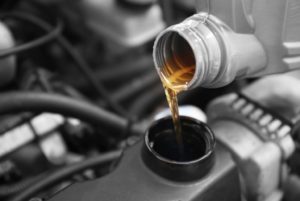It’s our responsibility to keep our environment clean because it’s essential for healthy living. How can we do this? Proper disposal of our wastes must be practiced. Though it may seem like a daunting task, you must know how to segregate household wastes. Identifying materials that can be recycled and those that are biodegradable (organic materials) is beneficial. Keeping the garbage bins clean is also a must. If you are living in Riverton, Utah or any other state, you can always trust a trash can cleaning company to do the job for you.
You can find different types of materials in the waste bins, most of which are plastic and other single-use items. Plastic materials have been widely used, and there are essential things that you must understand about them.
Not All Types of Plastic Material are Recyclable
Tons of plastic wastes are simply being trashed, increasing the volume of pollution that is a major global phenomenon. Some materials are difficult and costly to process and make them recyclable. Examples are coffee cups of paper with plastic and plastic bags with a foil lining. Since they are contaminated, they are mostly considered worthless once used. In addition, the pigment on plastic makes it harder for sorting technology during the recycling process.
Classifications of Plastic
 There are six categories of plastic. They are identified by the temperature at which the material has been processed. The types are classified by a numerical value that ranges from 1 to 6.
There are six categories of plastic. They are identified by the temperature at which the material has been processed. The types are classified by a numerical value that ranges from 1 to 6.
- No. 1 is Polyethylene Terephthalate: This type of plastic is typically used as water and pop bottles. PET is also popularly found in packaging.
- No. 2 is HDPE or High-Density Polyethylene: HDPE is one of the safest types of plastic. It’s common for detergent, toys, bags, milk, and oil bottles. This plastic is cost-effective to recycle and is reusable.
- No. 3 is Polyvinyl Chloride (PVC): This soft and flexible type of plastic is resistant to sunlight and weather. Examples are cooking oil bottles, toys, teeth rings, and food wrapping. Take note that it’s considered “poison plastic” because toxins can leach from it. PVC is not an ideal material to be recycled.
- No. 4 is Low-Density Polyethylene (LDPE): Typically used to package bread, you can also find it in squeezable bottles, dry cleaner garment bags, and shrink wraps. LDPE is safer compared to other types of plastic, so it’s safe for reuse.
- No. 5 is Polypropylene Plastic: PP is lightweight but durable. Ir also has heat resistance property. People use this for pails, plastic bottle tops, yogurt containers, margarine, straws, packing tape, potato chip bags, disposable diapers, and ropes because it hinders grease, chemicals, and moisture.
- No. 6 is Polystyrene: The type of plastic is easier to form with a wide variety of uses. Examples are egg cartons, plastic picnic cutlery, foam packaging, take-out clamshell food containers, and disposable Styrofoam drinking cups.
Refrain from exposing the plastic to the sun because the UV light is a significant factor that causes toxins on the plastic to leak.
An untidy environment leads to bad condition and makes way for the growth of disease-causing bacteria. So, it’s important to segregate and dispose of wastes properly to reduce the negative on our home planet.














